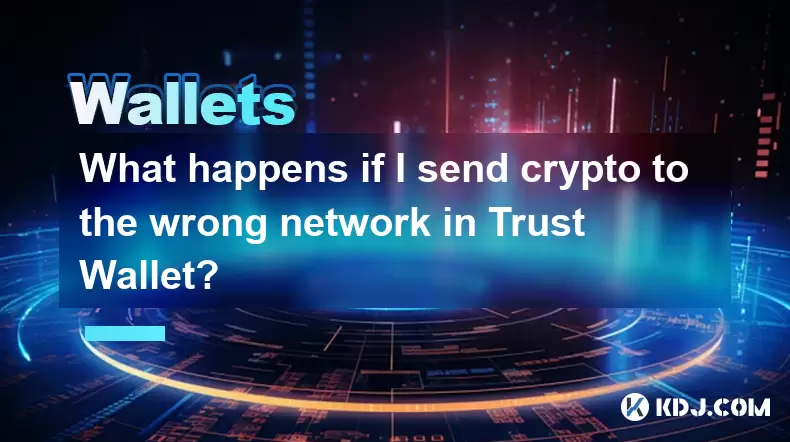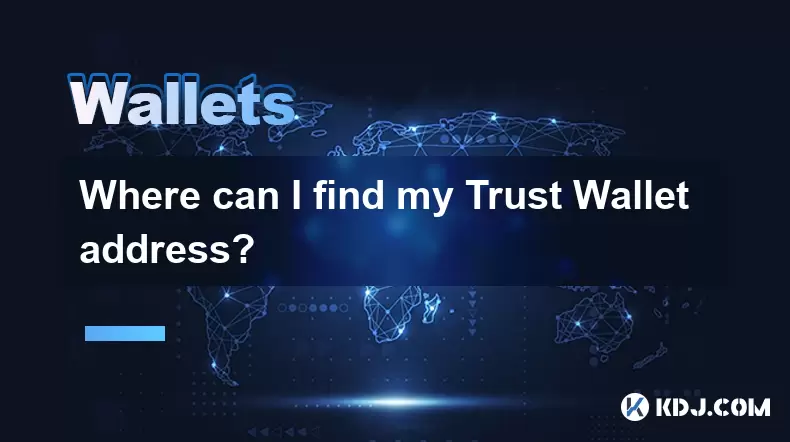-
 Bitcoin
Bitcoin $113900
-1.39% -
 Ethereum
Ethereum $3517
-4.15% -
 XRP
XRP $3.009
1.59% -
 Tether USDt
Tether USDt $0.9997
-0.04% -
 BNB
BNB $766.8
-1.41% -
 Solana
Solana $164.6
-2.38% -
 USDC
USDC $0.9998
-0.02% -
 TRON
TRON $0.3277
0.65% -
 Dogecoin
Dogecoin $0.2023
-1.67% -
 Cardano
Cardano $0.7246
0.05% -
 Hyperliquid
Hyperliquid $38.27
-4.77% -
 Sui
Sui $3.528
-0.52% -
 Stellar
Stellar $0.3890
-0.73% -
 Chainlink
Chainlink $16.16
-2.69% -
 Bitcoin Cash
Bitcoin Cash $539.9
-4.38% -
 Hedera
Hedera $0.2425
-2.00% -
 Avalanche
Avalanche $21.71
-0.97% -
 Toncoin
Toncoin $3.662
5.73% -
 Ethena USDe
Ethena USDe $1.000
-0.02% -
 UNUS SED LEO
UNUS SED LEO $8.964
0.35% -
 Litecoin
Litecoin $107.7
2.33% -
 Shiba Inu
Shiba Inu $0.00001223
-0.40% -
 Polkadot
Polkadot $3.617
-0.97% -
 Uniswap
Uniswap $9.052
-2.49% -
 Monero
Monero $295.1
-3.79% -
 Dai
Dai $0.9999
0.00% -
 Bitget Token
Bitget Token $4.315
-1.85% -
 Pepe
Pepe $0.00001060
0.11% -
 Cronos
Cronos $0.1342
-2.72% -
 Aave
Aave $256.0
-0.87%
How to pay through Coinbase Wallet? Cryptocurrency consumption practice
Use Coinbase Wallet for easy crypto payments: set up, fund, and pay for goods, services, or send money to friends with confidence and ease.
May 18, 2025 at 06:50 pm

Paying through Coinbase Wallet is an increasingly popular way to use cryptocurrencies for everyday transactions. Whether you're buying goods online, paying for services, or sending money to friends, understanding how to use Coinbase Wallet effectively can enhance your cryptocurrency experience. This guide will walk you through the steps and practices of using Coinbase Wallet for payments, ensuring you can do so with confidence and ease.
Setting Up Coinbase Wallet
Before you can start making payments, you need to set up your Coinbase Wallet. Here's how to get started:
- Download the Coinbase Wallet app from your device's app store. It's available for both iOS and Android devices.
- Create a new wallet or import an existing one. If you're new to Coinbase Wallet, choose to create a new wallet. You'll be prompted to set a strong password.
- Secure your recovery phrase. After creating your wallet, you'll be given a 12-word recovery phrase. Write this down and store it in a safe place. Never share your recovery phrase with anyone.
- Verify your identity. Depending on your location and the services you want to use, you might need to complete identity verification.
Adding Funds to Your Coinbase Wallet
To make payments, you need to have funds in your Coinbase Wallet. You can add cryptocurrencies in several ways:
- Transfer from Coinbase.com. If you have an account on Coinbase.com, you can easily transfer funds to your Coinbase Wallet. Open the Coinbase Wallet app, go to the 'Settings' tab, select 'Transfer', and follow the prompts to move funds from Coinbase.com to your wallet.
- Buy crypto directly. Within the Coinbase Wallet app, you can buy cryptocurrencies using a linked bank account or debit card. Navigate to the 'Buy' section, select the cryptocurrency you want to purchase, enter the amount, and complete the transaction.
- Receive crypto from others. You can also receive cryptocurrencies directly into your Coinbase Wallet. To do this, go to the 'Receive' section, select the cryptocurrency you want to receive, and share the displayed address or QR code with the sender.
Making Payments with Coinbase Wallet
Once your wallet is funded, you can start making payments. Here's how to do it:
- Open the Coinbase Wallet app and navigate to the 'Send' section.
- Select the cryptocurrency you want to use for the payment.
- Enter the recipient's address. You can do this by manually entering the address, scanning a QR code, or selecting a contact if they are saved in your wallet.
- Enter the amount you want to send. Make sure to double-check the amount and the recipient's address to avoid errors.
- Review the transaction details and confirm the payment. You'll be asked to enter your password to authorize the transaction.
- Wait for the transaction to be confirmed on the blockchain. The time it takes can vary depending on the cryptocurrency and network congestion.
Using Coinbase Wallet for In-Store Purchases
Coinbase Wallet also supports in-store purchases through NFC technology, allowing you to pay at compatible merchants. Here's how to use it:
- Ensure your device supports NFC. Most modern smartphones do, but it's good to check.
- Open the Coinbase Wallet app and navigate to the 'Pay' section.
- Select the cryptocurrency you want to use for the payment.
- Hold your device near the payment terminal. The app will use NFC to communicate with the terminal.
- Authorize the payment by entering your password or using biometric authentication like Face ID or Touch ID.
- Wait for the transaction to be confirmed. The merchant will receive the payment, and you'll get a confirmation on your device.
Paying for Online Goods and Services
Many online merchants now accept cryptocurrencies as payment. Here's how to use Coinbase Wallet to pay for online purchases:
- Find a merchant that accepts cryptocurrencies. Look for the cryptocurrency payment option during checkout.
- Select the cryptocurrency you want to use for the payment.
- Enter the amount and review the transaction details. Some merchants might use a third-party service to handle cryptocurrency payments, so the process might vary slightly.
- Authorize the payment through Coinbase Wallet. You'll be redirected to the app to confirm the transaction.
- Wait for the transaction to be confirmed. Once confirmed, the merchant will process your order.
Sending Money to Friends and Family
Coinbase Wallet makes it easy to send money to friends and family. Here's how to do it:
- Open the Coinbase Wallet app and navigate to the 'Send' section.
- Select the cryptocurrency you want to send.
- Enter the recipient's address or select a contact if they are saved in your wallet.
- Enter the amount you want to send and review the transaction details.
- Authorize the payment by entering your password.
- Wait for the transaction to be confirmed. The recipient will receive the funds once the transaction is confirmed on the blockchain.
Frequently Asked Questions
Q: Can I use Coinbase Wallet to pay for anything?
A: While Coinbase Wallet supports a wide range of cryptocurrencies and can be used for many types of payments, not all merchants accept cryptocurrencies. It's important to check if the merchant you're dealing with accepts the cryptocurrency you want to use.
Q: Is it safe to use Coinbase Wallet for payments?
A: Coinbase Wallet uses advanced security measures to protect your funds, including encryption and secure storage of your private keys. However, it's crucial to follow best practices like securing your recovery phrase and being cautious of phishing attempts.
Q: How long does it take for a payment to be confirmed?
A: The time it takes for a payment to be confirmed can vary depending on the cryptocurrency and the current state of the blockchain. Some transactions can be confirmed in minutes, while others might take longer.
Q: Can I use Coinbase Wallet to pay internationally?
A: Yes, Coinbase Wallet allows you to send and receive cryptocurrencies globally, making it a convenient option for international payments. However, be aware of any potential fees and exchange rates that might apply.
Disclaimer:info@kdj.com
The information provided is not trading advice. kdj.com does not assume any responsibility for any investments made based on the information provided in this article. Cryptocurrencies are highly volatile and it is highly recommended that you invest with caution after thorough research!
If you believe that the content used on this website infringes your copyright, please contact us immediately (info@kdj.com) and we will delete it promptly.
- DeFi Token Summer Gains: Is Mutuum Finance the Real Deal?
- 2025-08-02 18:30:12
- Bitcoin, Realized Price, and the Top: Are We There Yet?
- 2025-08-02 18:30:12
- Dogwifhat (WIF) Rally: Will the Meme Coin Bite Back?
- 2025-08-02 19:10:12
- PayFi Heats Up: Tron's AMA Recap & TRX's Bullish Nasdaq Debut
- 2025-08-02 19:10:12
- ARK Invest, Coinbase, and BitMine: Decoding the Crypto Investment Shuffle
- 2025-08-02 19:15:23
- JasmyCoin Under Pressure: Bears Grip Tight, Testing Lower Support
- 2025-08-02 19:15:23
Related knowledge

What is a watch-only wallet in Trust Wallet?
Aug 02,2025 at 03:36am
Understanding the Concept of a Watch-Only WalletA watch-only wallet in Trust Wallet allows users to monitor a cryptocurrency address without having ac...

How to switch between networks in Trust Wallet?
Aug 02,2025 at 12:36pm
Understanding Network Switching in Trust WalletSwitching between networks in Trust Wallet allows users to manage assets across different blockchains s...

How to check my full transaction history on Trust Wallet?
Aug 02,2025 at 09:24am
Understanding Transaction History in Trust WalletTrust Wallet is a widely used non-custodial cryptocurrency wallet that supports a broad range of bloc...

Why is my Trust Wallet balance zero?
Aug 02,2025 at 03:49am
Understanding Trust Wallet Balance Display IssuesIf you're seeing a zero balance in your Trust Wallet despite knowing you've previously received or se...

What happens if I send crypto to the wrong network in Trust Wallet?
Aug 02,2025 at 07:22pm
Understanding Network Compatibility in Trust WalletWhen using Trust Wallet, it's essential to understand that different cryptocurrencies operate on di...

Where can I find my Trust Wallet address?
Aug 02,2025 at 06:07pm
Understanding Your Trust Wallet AddressYour Trust Wallet address is a unique identifier that allows others to send you cryptocurrency. It is a string ...

What is a watch-only wallet in Trust Wallet?
Aug 02,2025 at 03:36am
Understanding the Concept of a Watch-Only WalletA watch-only wallet in Trust Wallet allows users to monitor a cryptocurrency address without having ac...

How to switch between networks in Trust Wallet?
Aug 02,2025 at 12:36pm
Understanding Network Switching in Trust WalletSwitching between networks in Trust Wallet allows users to manage assets across different blockchains s...

How to check my full transaction history on Trust Wallet?
Aug 02,2025 at 09:24am
Understanding Transaction History in Trust WalletTrust Wallet is a widely used non-custodial cryptocurrency wallet that supports a broad range of bloc...

Why is my Trust Wallet balance zero?
Aug 02,2025 at 03:49am
Understanding Trust Wallet Balance Display IssuesIf you're seeing a zero balance in your Trust Wallet despite knowing you've previously received or se...

What happens if I send crypto to the wrong network in Trust Wallet?
Aug 02,2025 at 07:22pm
Understanding Network Compatibility in Trust WalletWhen using Trust Wallet, it's essential to understand that different cryptocurrencies operate on di...

Where can I find my Trust Wallet address?
Aug 02,2025 at 06:07pm
Understanding Your Trust Wallet AddressYour Trust Wallet address is a unique identifier that allows others to send you cryptocurrency. It is a string ...
See all articles

























































































